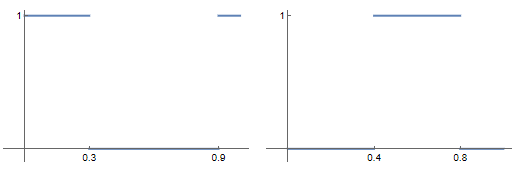$\newcommand\op\oplus$Apparently, here $\mu$ is the Lebesgue measure. Identify the interval $[0,1)$ with the (say) unit circle in a standard manner. Slightly more elementarily, for $x$ and $K$ in $(0,1)$, let $$ (x,x\op K):= \begin{cases} (x,x+K)&\text{ if }x+K\le1,\\ (x,1)\cup(0,x+K-1)&\text{ if }x+K>1. \end{cases} $$ Then $$\int_0^1 dx\,\int_{(x,x\op K)} dt\,f(t) =\int_0^1 dt\,f(t)\,\int_0^1 dx\,1(t\in(x,x\op K)) =\int_0^1 dt\,f(t)\,K.$$ Since $\int_{(x,x\op K)} dt\,f(t)$ is continuous in $x$, there exists some $x_*\in[0,1]$ such that $$\int_{(x_*,x_*\op K)} dt\,f(t)=\int_0^1 dt\,f(t)\,K,$$ as desired.
Here are the graphs $\{(x,1(t\in(x,x\op 0.4)))\colon 0<x<1\}$ for $t=0.3$ (left) and $t=0.8$ (right):

